The EU seems to produce a rich array of unusual (“speciality”) films – from Adox, Rollei, Spur and others (many of which are rebranded Agfa-Gaevert films). Trying to get any of these in Japan, let alone their specialist developing chemicals, is hit and miss – generally stockists are ‘sold out’ or when there is stock it is often expired film. I was fruitlessly looking for one of the Adox films and came across this Agfa panchromatic microfilm (intended for copying documents) at a reasonable price (about EUR7/roll) so I bought all the remaining stock (9 rolls) to give the film a try. The film is identical to SPUR DSX and the recommended developer was SPUR Dokuspeed SL, also difficult to find and expensive.
Looking around on the net I found a review (Alex Luyckx blog 88) and some suggested developers and times on the Massive chart, together with some other reviews. Copex Rapid is a very high contrast film, similar to Technical Pan so I looked in Anchell’s Darkroom Cookbook for suggestions (Burton 195 and POTA).
Round 1:
After some thought I decided to shoot one film and cut it into four strips to try the developer/times given below. The film was shot within a period of 5 minutes in early morning light using a Leica M3 and Zeiss Planar lens with a yellow filter. Three subjects were chosen, each photographed at f4 and 1/50th, and +/- one stop, giving 3×3 images repeated 4 times. Exposure was determined using a Minolta Spotmeter F averaging zone 2 and 8 readings. The front door image turned out to be the most useful because of the large uniform area.
1. Rodinal 400:1 45 minutes with one inversion; can it be coaxed into giving a full range of tones with this film?
2. Burton 195 6 minutes continuous agitation.
3. POTA 15 minutes, 3 inversions every minute.
4. Rodinal 200:1 60 minutes with one inversion at 17deg C.
The first three developers were at 20deg C, a water stop was used and films fixed for a little under 2 minutes (according to one suggestion 30-60 seconds may be enough because of the very fine grain).
On initial casual inspection the Rodinal 400:1 seemed underdeveloped, the Burton 195 about right and the POTA over-developed – the edges were also slightly fogged. After scanning (BlackBox 135, Sony A7Rii and Sigma 105mm Macro) I saw that POTA had a strange swirling pattern (although contrast was best), Burton 195 was far too contrasty and the Rodinal negatives were the clear winner although not perfect and it showed some odd development around the door handle. The results from Rodinal 200:1 were best using the one stop under exposed negatives but even then the highlights were blown out.
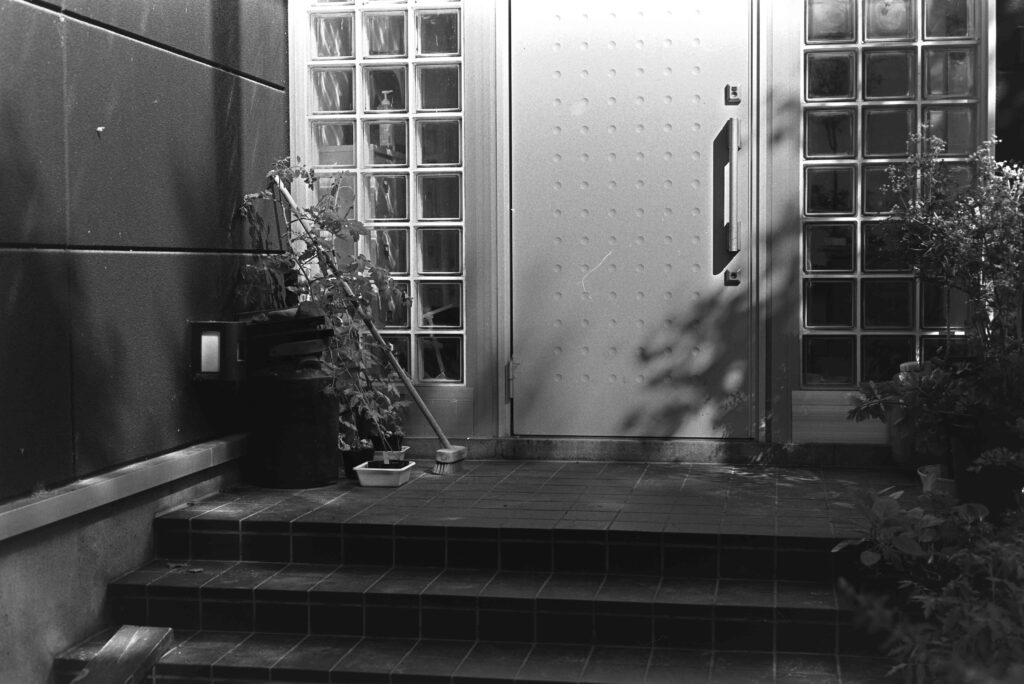
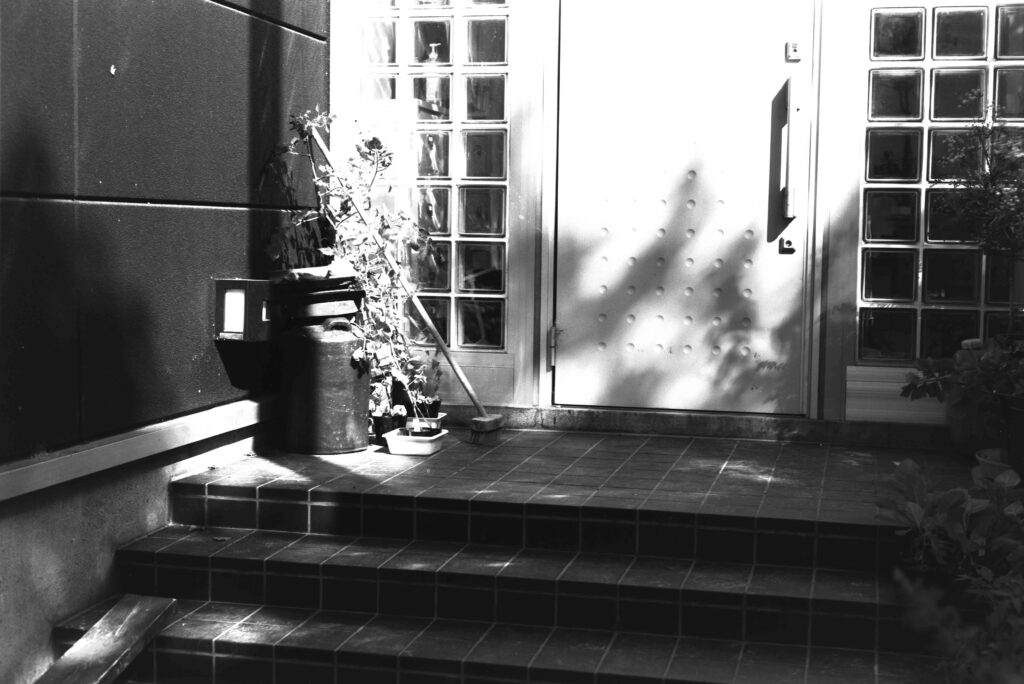
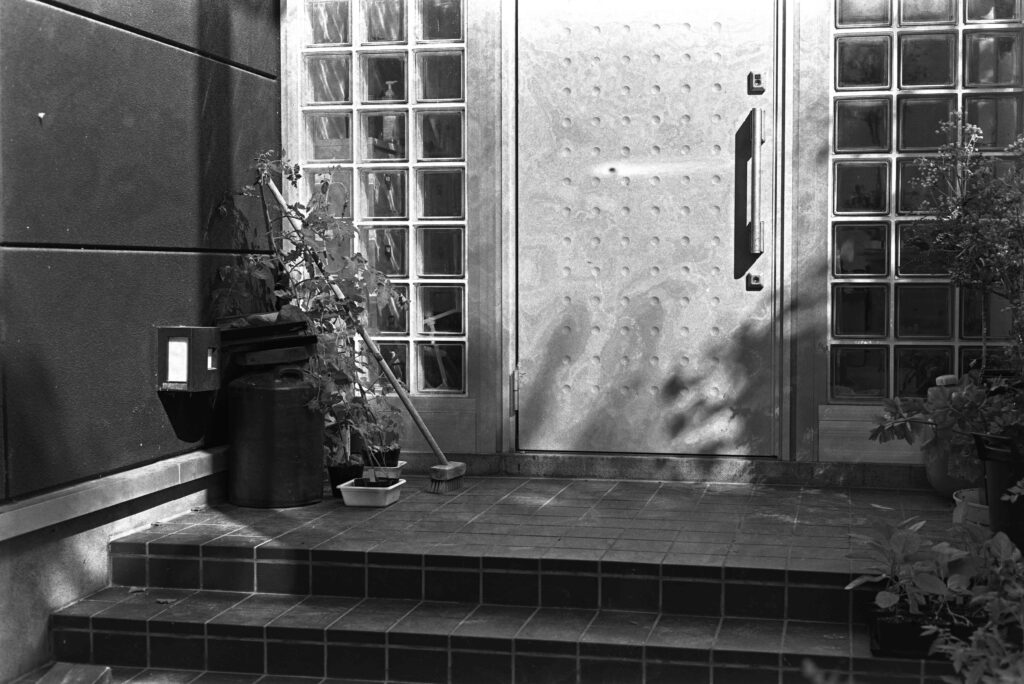
Round 2:
On a second film I took four sets of five frames of the front door in brighter light a little later the following day, exposing from -2 to +2 stops around the central reading on the spotmeter. I developed these as follows using an acid stop before fixing.
5. Anchell suggests diluting Burton 195 to half strength and developing for 50% to 100% longer. I tried 9 minutes development time and reduced agitation to two inversions every 30 seconds. Contrast was greatly improved though now there was a slight swirling pattern visible.
6. POTA would have been best if only I could get rid of the swirling pattern, but what is the cause? One article (Reudiger Hartung on flickr) said film should be pre-soaked to avoid streaking, which I did for two minutes. Agitation was two inversions every 30 seconds. The result was much less swirling pattern but still some. Background fog and contrast started to rise – hints I ignored at my peril.
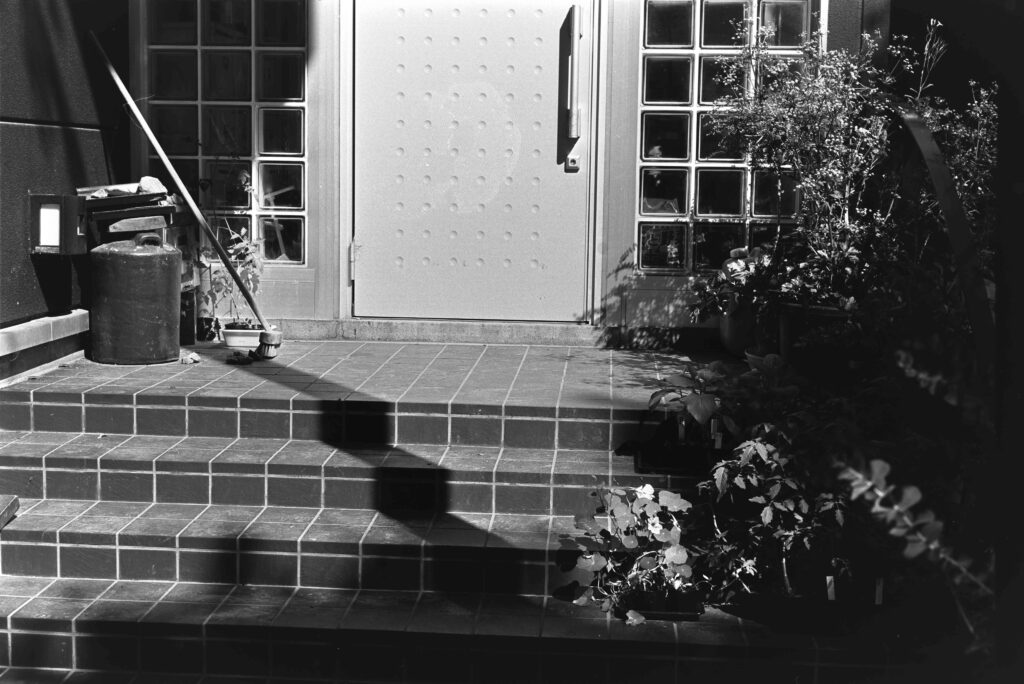
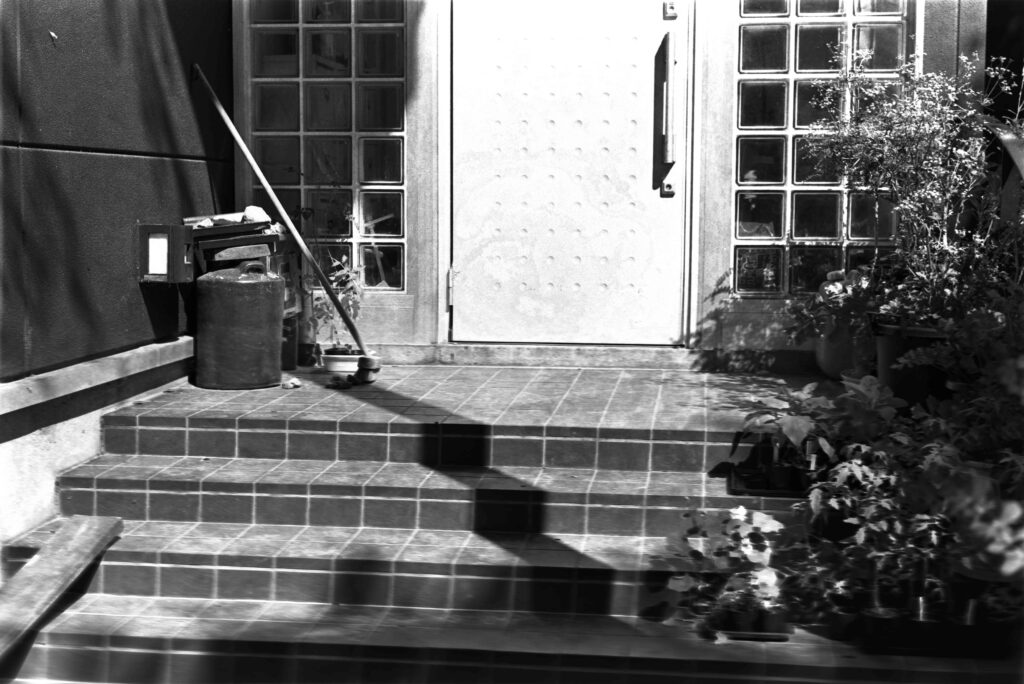
Round 3:
A little further searching and pre-washing with dilute (2%) sodium carbonate was suggested to remove the anti-halation layer, followed by a water wash.
7. Burton half strength again and 9m development time, but now with a 40 inversion pre-wash in sodium carbonate, followed by a water wash. BINGO – a decent result.
8. POTA again but with a 40 inversion pre-wash in sodium carbonate, followed by a water wash, continuous agitation for one minute at the start then as before. But now it’s all gone wrong – suddenly hugely over-developed with strong background fog. Development time and/or agitation and/or developer strength need to be reduced if the anti-halation layer is reduced. Was there contamination from the sodium carbonate making the developer far more active?
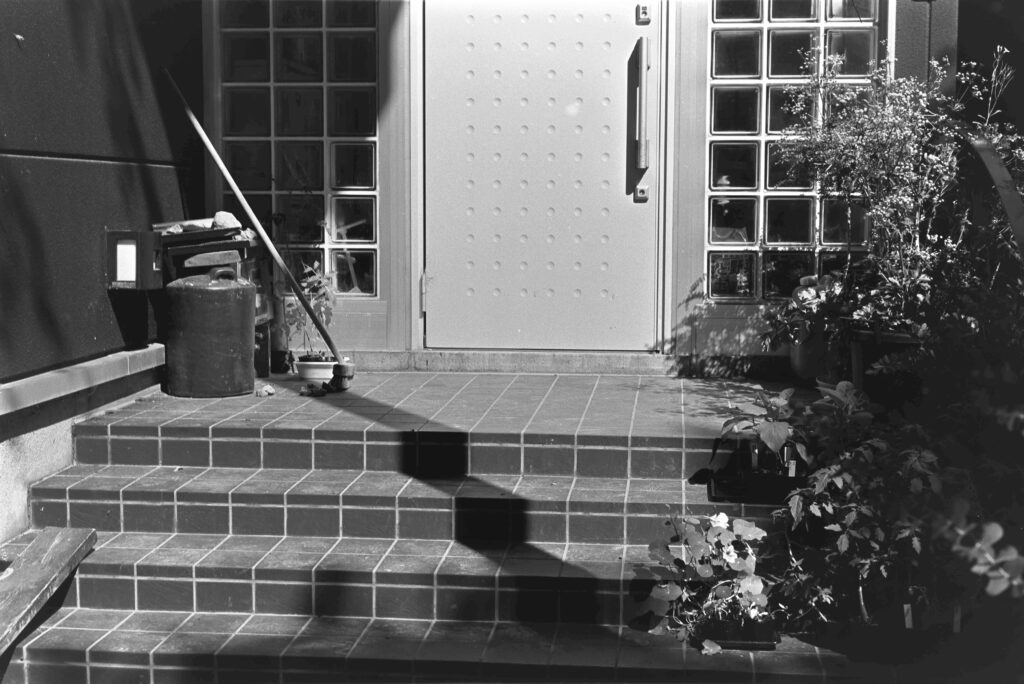
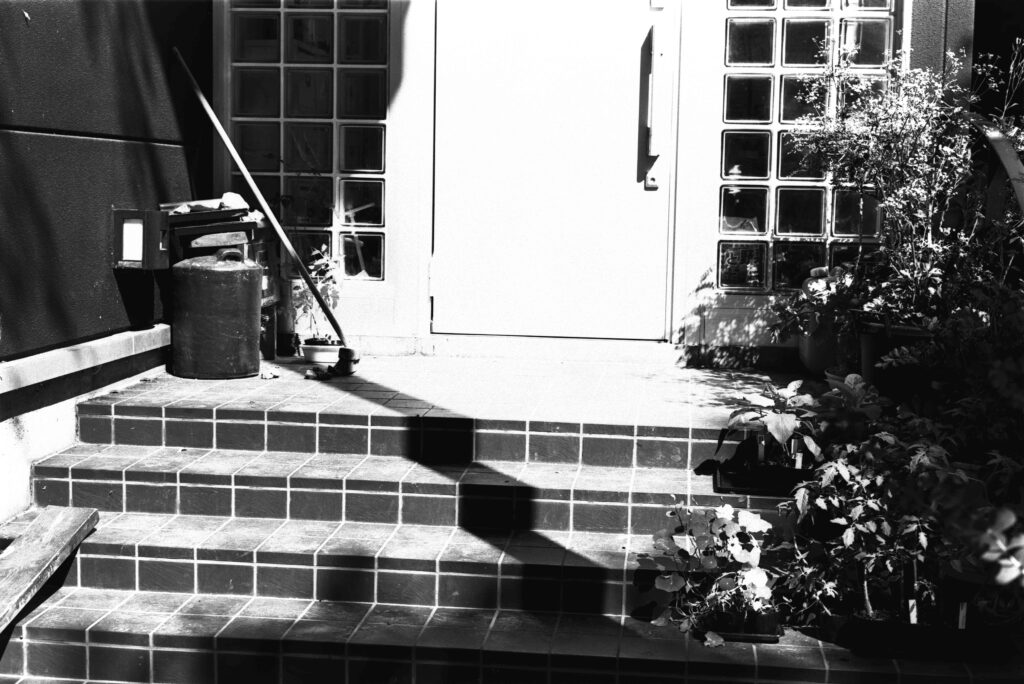
NOTE on the developers:
Adox Rodinal, 6 years old.
Burton 195: 1g metol, 10g sodium sulphite, 2g borax, 1g boric acid, 1l purified water; used fresh. This has the advantage that two solutions can be made up (metol/suphite and borax/acid) and will keep but once mixed about a 24 hour life.
POTA: 30g sodium sulphite, 1.5g phenidone, 1l purified water; used fresh. POTA has a shelf life of only one hour!
The quantities of developers (metol and phenidone) and the acidifyers are tiny so errors in measurement could amount to 5-10% of the weight – this would affect the results a little.
Sodium carbonate (washing soda) rapidly removes the anti-halation layer which seems to be the cause of the swirling pattern. Most developers are sufficiently alkaline to remove this quickly themselves but not Burton and POTA. On the other hand sufficient water washing should remove the layer on B&W film – maybe 5 minutes?
Conclusions:
Rodinal 400:1 was passable, probably fine on most images. Burton 195 half-strength with sodium carbonate pre-wash worked well.
If I use either Burton or POTA again I’ll skip the sodium pre-wash and simply use water for 5 minutes with regular agitation. For POTA I’d also try half strength and semi-stand development.
Share this post:
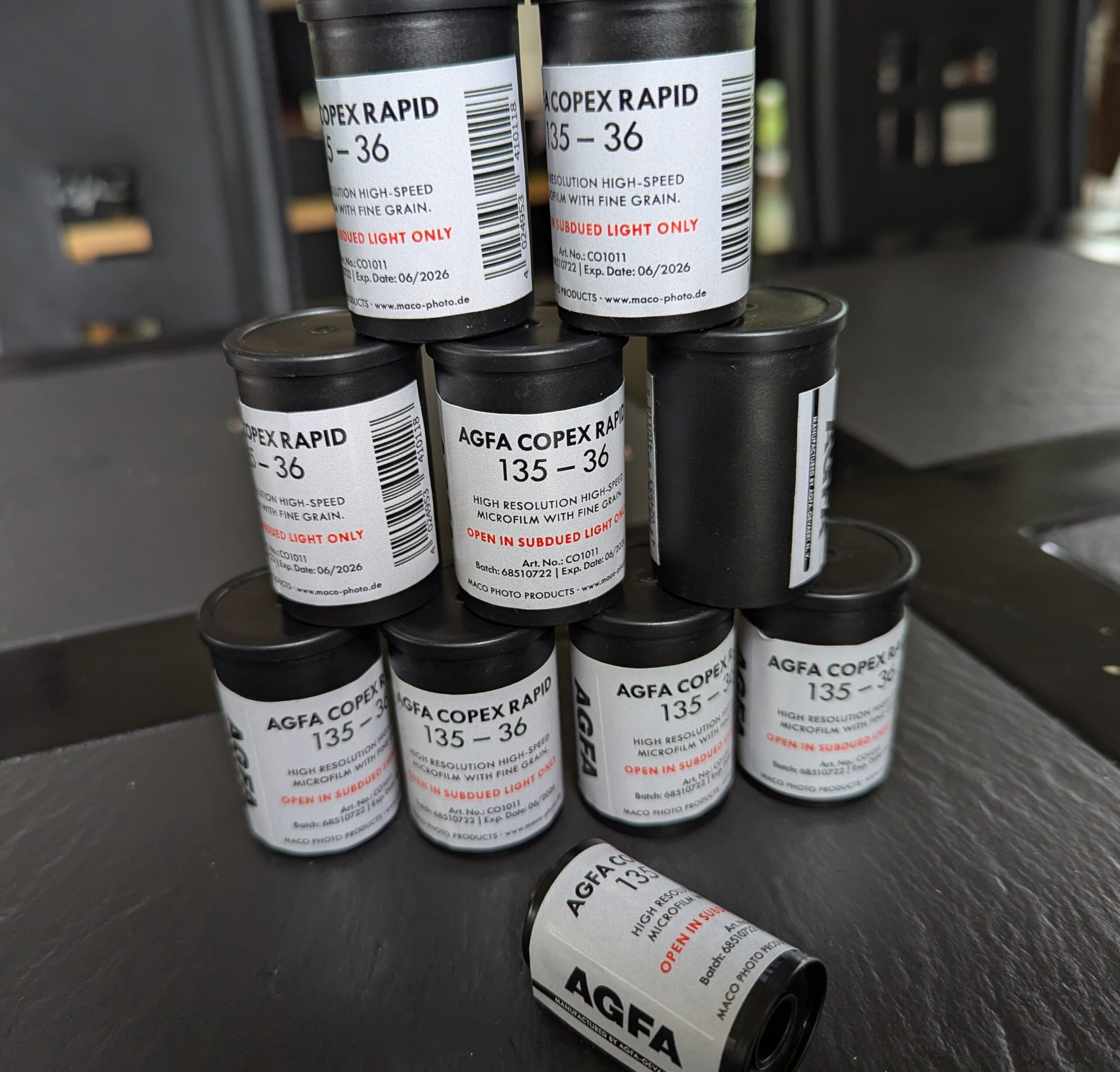
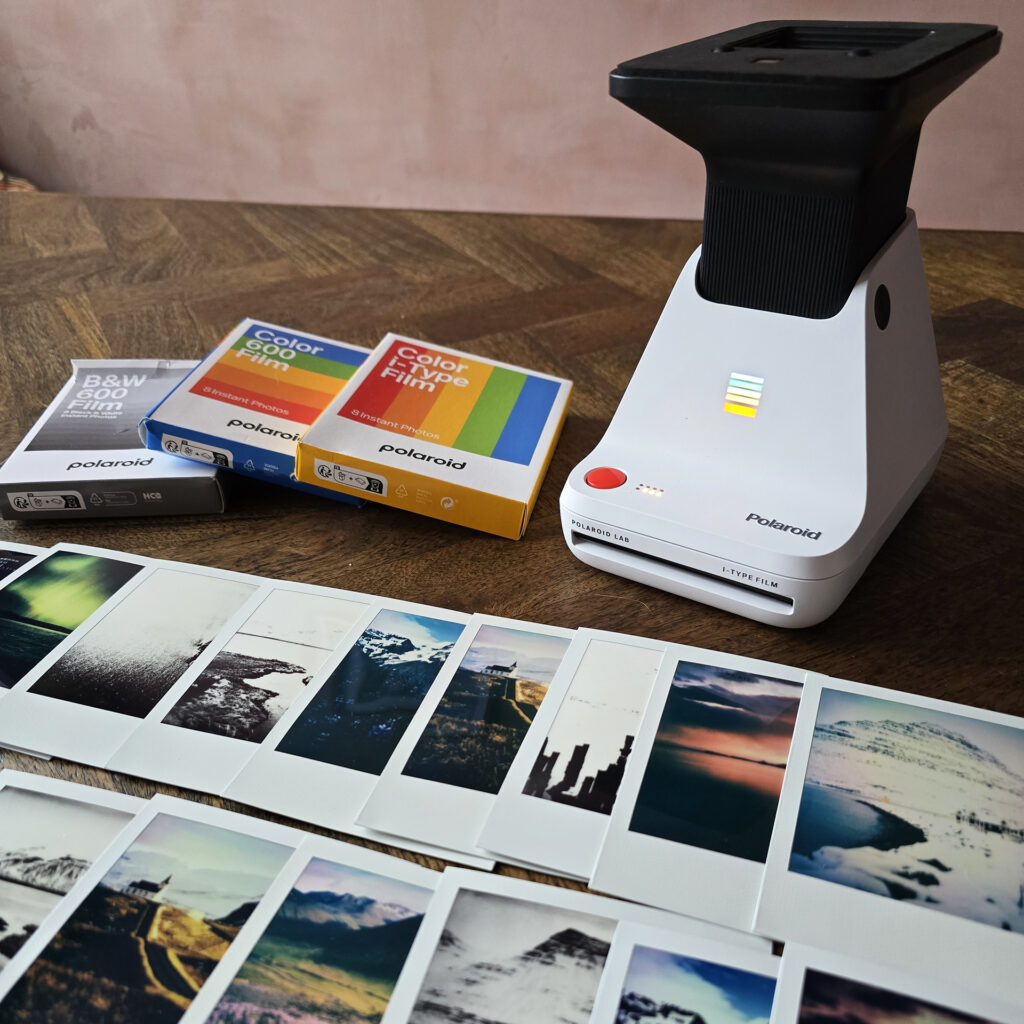
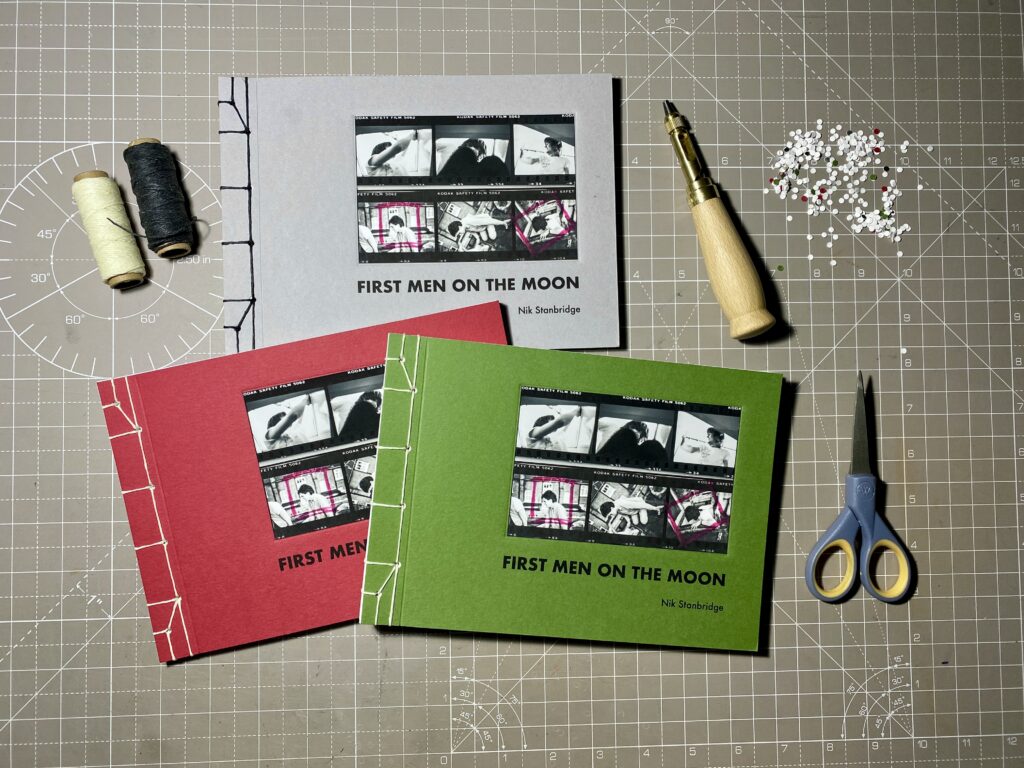

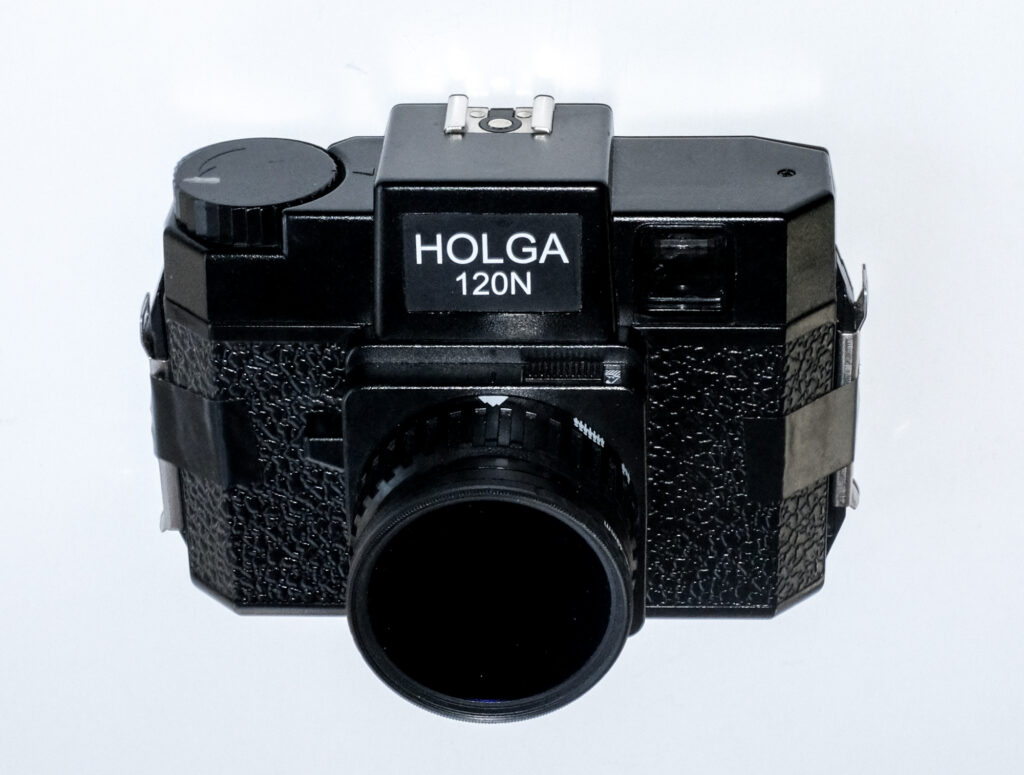




Comments
murray leshner on Agfa Copex Rapid – Development Tests
Comment posted: 23/07/2024
(Many?) Years ago I got a relatively roll of 5" microfiche film. I think it was Agfa and not Kodak for a group effort to hand cut for 120 and 4x5 sheet film. Idle threats to make it available in 120 format dragged on for years with no (vaporfilm?) apparition resulted. A sales rep donated it in response to my evidently convincing proposal letter. Yikes, that WAS long ago...shortly after 2000.
The plan was to ship it around, among the group to convince everyone it was amazing and grainless and group members would contribute for a group order. I had some con-tone developer plans based on a developer patent and also to substitute easier-to-find components that gave superadditivity based on math in another patent that discussed what factors could be used to recalculate substitute compounds. I vaguely remember something about the molecular weights of the 'important' active ion/radical/? in each superadditivity 'candidate' being scaled in proportion to their respective partial molecular weights.
The 2nd participant was eager but hadn't figured out anything more sophisticated than scissors to cut his film. I was participant #1 and I overthink everything so I shipped the roll to Mr. #2 (no, not THAT guy). He cut himself some sheets, ignored my too-complicated developer recommendations, had film flatness issues so he shot it as pinhole, and wasn't thrilled with the results he got with his whimsical warm developer recipe. He cut and wrapped some sheets for me, and shipped the 90+% remaining back to me. He wasn't happy with his asymmetrical hand cut sheets or the haphazard choice of his 'developer logic'. I think the film was significantly thinner than sheet film (very common complaint; same with 5" Kodak Aerial film...burst vacuum systems evolved to keep film flat then release it in sequence.
The rest of the group got scared off, which meant a group buy wasn't going to happen. I think the approximate cost of USD1100 was a deterrent, also. At this point I can't remember if that was for one roll or six in a carton. Probably the latter because I remember a single roll being unobtainable before one materialized as a donation.
I have had two computers die since then. I started trying to find the patents and recipes again last year. My film hoard was evicted from the household freezer when one with less storage space replaced one that expired. I know where the film is, and (luckily) people said it was kind of 'slow'
So your story and results inspire me to resume my research again. Even if just find where I left off, that would be helpful (to me if no one else).
Comment posted: 23/07/2024
murray leshner on Agfa Copex Rapid – Development Tests
Comment posted: 23/07/2024
Someone gave me a suggestion for a different beast, x-ray sheet film, to use 'brush' development*, with a Japanese hake** with stitched bristles (you know what that is and know better than to redundantly say hake (brush). For some chemistry being discussed the suggester said it was important to use a hake because it had no iron/steel retainer for the bristles, unlike western paint brushes. Only process I can think of that wants no iron contamination is completely unrelated. Maybe the large hake sizes and benefits for brush development of any kind are the reason they were recommended.
* brush development gently 'mops' the developer across the emulsion of a sheet of film continuously. I don't remember the change in development time but it's supposed to be very efficient and eliminates side effects like swirling. The down side is having to stand there are continuously 'paint' the negative.
** Hake (pronounced HAH-kay) is Japanese for 'brush'. So please don't say hake brush at your next party opportunity or the silent stares you receive won't be dropped-jaw admiration. While you're at it, up your sophistication game and omit the trailing part '...of opinion' when you use the word consensus. Then you'll be using it properly and impress your photographer friends more. l:O)
Comment posted: 23/07/2024
Julian Tanase on Agfa Copex Rapid – Development Tests
Comment posted: 23/07/2024
Comment posted: 23/07/2024
Comment posted: 23/07/2024
murray leshnern on Agfa Copex Rapid – Development Tests
Comment posted: 23/07/2024
I found the US Patent that has their 'Novel Developer', as well as alternative chemicals and the range of conditions where they offer substitution potential.
It's not simple, but it offers potential enlightenment, if not relief from insomnia.
https://patentimages.storage.googleapis.com/9f/44/e5/dd19817395a784/US3772019.pdf
Murray
Comment posted: 23/07/2024
Jeffery Luhn on Agfa Copex Rapid – Development Tests
Comment posted: 24/07/2024
Comment posted: 24/07/2024
Comment posted: 24/07/2024
Simon Foale on Agfa Copex Rapid – Development Tests
Comment posted: 24/07/2024
H&W Control seemed to work pretty well, but some of the images had some indication of uneven development along the edges, corresponding to the film perforations. I've also developed Agfa Copex in 120 using FX1 (much simpler and quicker to mix up as a one-shot developer) and that controls the contrast at least as well as H&W Control. But I had the same problems with ink from the backing paper marking the negs as I've had with Rollei Retro 80s and RPX25. All three are packaged by Maco.
Comment posted: 24/07/2024